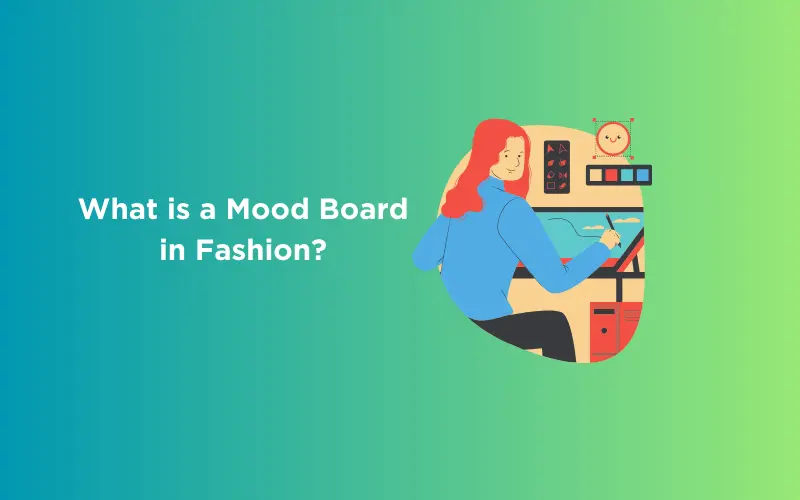
Have you ever wondered how fashion designers come up with amazing ideas for their clothes and shows? A big part of this process is something called a mood board. Imagine a big board where you stick all kinds of pictures, fabric pieces, and colors that you like. This board helps designers to think of new ideas and decide what their new clothes or fashion shows should look like.
In this blog, we’re going to talk about these mood boards and why they are so important in fashion. We’ll explain what a mood board is and how you can make one yourself. We’ll show you how to choose the best pictures and colors for your board and share some tips to make it really good.
Let’s get into the colorful and exciting world of fashion mood boards together!
Table of contents
- What is a Fashion Mood Board?
- How To Create a Fashion Mood Board?
- Define the Purpose
- Research
- Choose Your Medium
- Sorting and Selecting
- Placement and Layout
- Review
- Presentation
- How to Choose Colors for Your Fashion Mood Board?
- A. Pick Your Main Colors
- B. Select Your Secondary Colors
- C. Add Neutrals (Ground Colors)
- 10 Best Practices for Creating a Fashion Mood Board
- Define Your Why
- Build Your Aesthetic
- Focus on Fabrics & Textures
- Work in Your Research & References
- Look Outside the Industry
- Consider the Future Environment
- Pay Attention to Layout
- Showcase Color
- Double-Check the Details
- Remove Something
- Conclusion
- FAQs
- What is a fashion mood board?
- Why do fashion designers use mood boards?
- Can anyone make a fashion mood board, and do you need special tools?
What is a Fashion Mood Board?
A fashion mood board is like a visual brainstorming tool used in the fashion world. It’s a collage of images, materials, colors, and sometimes even words, all put together on a board or a digital platform. These elements are not random; they’re carefully chosen to represent a particular style, theme, or idea that a designer wants to explore. The mood board is a source of inspiration and a guide for creating something new, whether it’s a clothing line, an individual outfit, or an entire fashion show.
The main purpose of a mood board in fashion is to help translate abstract ideas into something visual and tangible. It’s a way for designers to organize their thoughts, experiment with different concepts, and see how various elements like colors, textures, and styles can work together. By looking at the mood board, a designer can get a clearer idea of what they want to create.
In the planning and design process, mood boards play several important roles:
- Inspiration: They kick-start creativity by gathering various inspiring elements in one place.
- Communication: Mood boards help designers communicate their vision to others, like team members, clients, or stakeholders. It’s easier to show a mood board than to explain an idea with words alone.
- Cohesion: They ensure that the final designs are cohesive and follow a unified theme. This is especially important in collections or fashion shows where all pieces need to relate to each other in some way.
- Reference: Throughout the design process, the mood board acts as a reference point to ensure the work stays on track with the initial concept.
- Exploration: They allow designers to explore different color schemes, textures, and styles before finalizing their designs, saving time and resources that might be spent on trial and error.
Fashion mood boards are important tools that help turn creative visions into reality, ensuring that ideas are not only imaginative but also organized and cohesive.
Also Read: 21 Best AI Tools For UI/UX Designers in 2024

Now that you understand what a fashion mood board is and its significance in the world of fashion design, let’s get into the creative process. In the following section, we’ll explore step-by-step instructions on how to create your own fashion mood board, bringing your unique style visions to life.
As we proceed to the next phase, make sure you understand the fundamentals of UI/UX, which includes heuristic analysis, journey maps, testing, etc. If you want to explore more about it, join GUVI’s UI/UX Course with Placement Assistance. You’ll also learn about the tools used in UI/UX which are AdobeXD, Illustrator, Photoshop, Figma, and many more. Build some amazing real-time projects to get hands-on experience.
Also, if you want to explore Figma through a Self-paced course, try GUVI’s Figma certification course.
How To Create a Fashion Mood Board?
Creating a fashion mood board is an exciting process that allows you to channel your creativity and vision into a tangible form. Here’s a step-by-step guide to help you craft a mood board that effectively communicates your fashion ideas:
1. Define the Purpose
Before you start, ask yourself what you want to achieve with this mood board. Are you designing a clothing line, planning a photoshoot, or simply exploring a new style? Your mood board’s purpose will guide your choices throughout the creation process.
2. Research
This is where you explore fashion for ideas. Look at fashion magazines, websites, art, nature, or even historical periods for inspiration. Collect anything that sparks your interest – it could be colors, patterns, textures, or overall vibes.
3. Choose Your Medium
Decide if you want to create a digital mood board using software like Photoshop or a website like Pinterest or a physical one using a corkboard or poster board. Digital boards are easier to edit and share, while physical boards can be more tactile and hands-on.
Also Find Out the 14 Best AI Image Generator Tools
4. Sorting and Selecting
With your research in hand, start selecting the most relevant pieces. This might include images of outfits, swatches of fabric, quotes, color palettes, and anything else that aligns with your goal. Be selective – the mood board should be cohesive and focused.

5. Placement and Layout
Arrange your chosen items on your board. Play with composition, balance, and color to create an aesthetically pleasing layout. The placement should tell a story and guide the viewer through your vision.
6. Review
Step back and look at your mood board as a whole. Does it convey the message you intended? Make adjustments as needed, removing items that don’t fit or adding new ones to fill gaps.
7. Presentation
If you’re sharing your mood board with others, present it in a clear and professional manner. Explain the key elements and how they contribute to your overall vision. If it’s a digital mood board, ensure it’s in a format that’s easy to view and share.
Creating a fashion mood board is a dynamic and personal process. It’s not just about putting together pretty images – it’s about defining and communicating a unique fashion vision. Enjoy the process and let your creativity flow!
Also Read: Minimalism in UI/UX Design: Role and Importance for Design Career

Now that we’ve explored how to create a fashion mood board, let’s get into one of its most important elements: selecting the perfect color palette. This next section will guide you through the process of picking colors that not only resonate with your fashion vision but also harmoniously blend to create a cohesive and impactful design statement.
How to Choose Colors for Your Fashion Mood Board?
Choosing the right colors for your fashion mood board is important as it sets the tone and mood for your entire design concept. Here’s how you can effectively pick colors that will bring your fashion vision to life:
A. Pick Your Main Colors
Start by selecting the main colors for your mood board. These are the colors that will dominate your design and should reflect the essence of your theme. Consider what emotions or styles you want to convey – vibrant reds for energy and passion, soft blues for calm and serenity, or perhaps bold and unconventional color combinations for a more avant-garde look. These primary colors will guide the overall feel of your fashion project.
Also Explore: Dark Mode Design in UI: The Basic Guide 2024
B. Select Your Secondary Colors
Once you have your main colors, choose secondary colors. These should complement and enhance your primary colors, adding depth and complexity to your palette. They can be contrasting colors (opposite on the color wheel) for a bold effect, or similar tones for a more harmonious look. Accent colors are particularly useful for highlighting key elements and adding visual interest to your designs.
C. Add Neutrals (Ground Colors)
Neutrals like black, white, gray, beige, and navy are essential in creating a balanced and cohesive color scheme. They ground your palette, providing a backdrop against which your main and secondary colors can stand out. Neutral colors are also versatile – they can be used to tone down loud colors or to add a touch of elegance and sophistication to your mood board.
When choosing colors for your mood board, it’s important to think about the overall harmony of your palette. Experiment with different combinations, and don’t be afraid to adjust as you go. The right colors can powerfully convey the mood and style of your fashion concept, making your mood board an effective tool for communication and inspiration.
Also Read: 9 Important Things of Color Theory in UI Design That You Shouldn’t Miss

Having explored how to choose the perfect color palette for your fashion mood board, let’s now get into the best practices that will elevate your mood board creation process. In the following section, we’ll explore the 10 best practices for creating a fashion mood board, ensuring your mood board is not only visually appealing but also effectively communicates your fashion vision.
10 Best Practices for Creating a Fashion Mood Board
Creating a fashion mood board is a process that combines creativity with strategic planning. Here are ten best practices to help you create an effective and inspiring mood board:
1. Define Your Why
Before you start, be clear about the purpose of your mood board. Knowing your objective will guide your choices and keep your mood board focused.
2. Build Your Aesthetic
Develop a unique aesthetic that represents your personal style or brand identity. This might involve a specific color palette, a type of silhouette, or a particular theme that sets your work apart.
Also Read: Designing for Dark Mode: Aesthetics, Accessibility, and User Preferences
3. Focus on Fabrics & Textures
Include samples of fabrics and textures in your mood board. This adds a tactile dimension to your board and gives a better sense of how your designs will feel.
4. Work in Your Research & References
Your research is important. Include historical references, market trends, artistic inspirations, or anything else that informs your fashion choices. This gives depth to your mood board and grounds your ideas in a solid context.
5. Look Outside the Industry
Don’t limit your inspiration to the fashion industry alone. Look to other fields like architecture, nature, technology, or art for fresh ideas and perspectives.
Find Out: 8 Stunning UI/UX Design Examples To Get You Inspired
6. Consider the Future Environment
Think about the context in which your designs will be worn. This includes considering the season, the target audience’s lifestyle, and the locations where the garments might be worn.

7. Pay Attention to Layout
The layout of your mood board should be carefully considered. Arrange elements in a way that’s visually pleasing and guides the viewer’s eye through your vision coherently.
8. Showcase Color
Color is a powerful tool in fashion design. Use your mood board to showcase your color scheme, ensuring it aligns with your overall aesthetic and purpose.
9. Double-Check the Details
Every element on your mood board should be intentional. Double-check that every image, fabric swatch, and color sample accurately represents your vision and adds value to your board.
Also Know About Top UI/UX Design Trends: Embracing Innovation in 2024
10. Remove Something
Sometimes, less is more. Don’t be afraid to remove elements that clutter or detract from the main message of your mood board. A more streamlined mood board can often be more powerful and clear.
Remember, a mood board is not just a collection of images and materials, but a strategic tool that communicates your creative vision. These best practices will help ensure your mood board is both inspiring and effective.

Kickstart your UI/UX journey by enrolling in GUVI’s UI/UX Course where you will master technologies like AdobeXd, Illustrator, and Figma, and build interesting real-life UI/UX projects.
Alternatively, if you would like to explore Figma through a Self-paced course, try GUVI’s Figma’s certification course.
Conclusion
Making a mood board is really about being creative and having fun with fashion. There’s no single “right” way to do it. It’s your chance to play around with ideas and see what you come up with. So go ahead, try different things, and see what amazing designs you can create. Enjoy making your fashion mood board!
Also Read: Balancing Between Creativity and Functionality in UI/UX Design Projects [2024]
FAQs
What is a fashion mood board?
A fashion mood board is like a big collage that fashion designers and enthusiasts use to present their style ideas. It’s a collection of images, colors, fabric samples, and sometimes words or quotes, all put together in one place. This board helps to visually explain a fashion concept or idea, like what a new clothing line might look like or the theme of a fashion show.
Why do fashion designers use mood boards?
Designers use mood boards because they’re a great way to organize and share their creative ideas. When you have lots of different ideas in your head, putting them on a mood board can help you see how they all fit together.
It also makes it easier to show other people, like team members or clients, what you’re thinking of without having to explain everything in words. Plus, mood boards can be a source of inspiration and help designers to keep their focus on a certain style or theme.
Can anyone make a fashion mood board, and do you need special tools?
Absolutely, anyone can make a fashion mood board! You don’t need any special tools or skills. You can make one digitally on a computer using programs like Photoshop or online platforms like Pinterest.
Or, you can make a physical mood board by pinning or taping items onto a board or a piece of paper. You just need things like pictures, fabric pieces, magazine clippings, or anything else that inspires you and fits your fashion idea. It’s all about being creative and having fun with your own style!

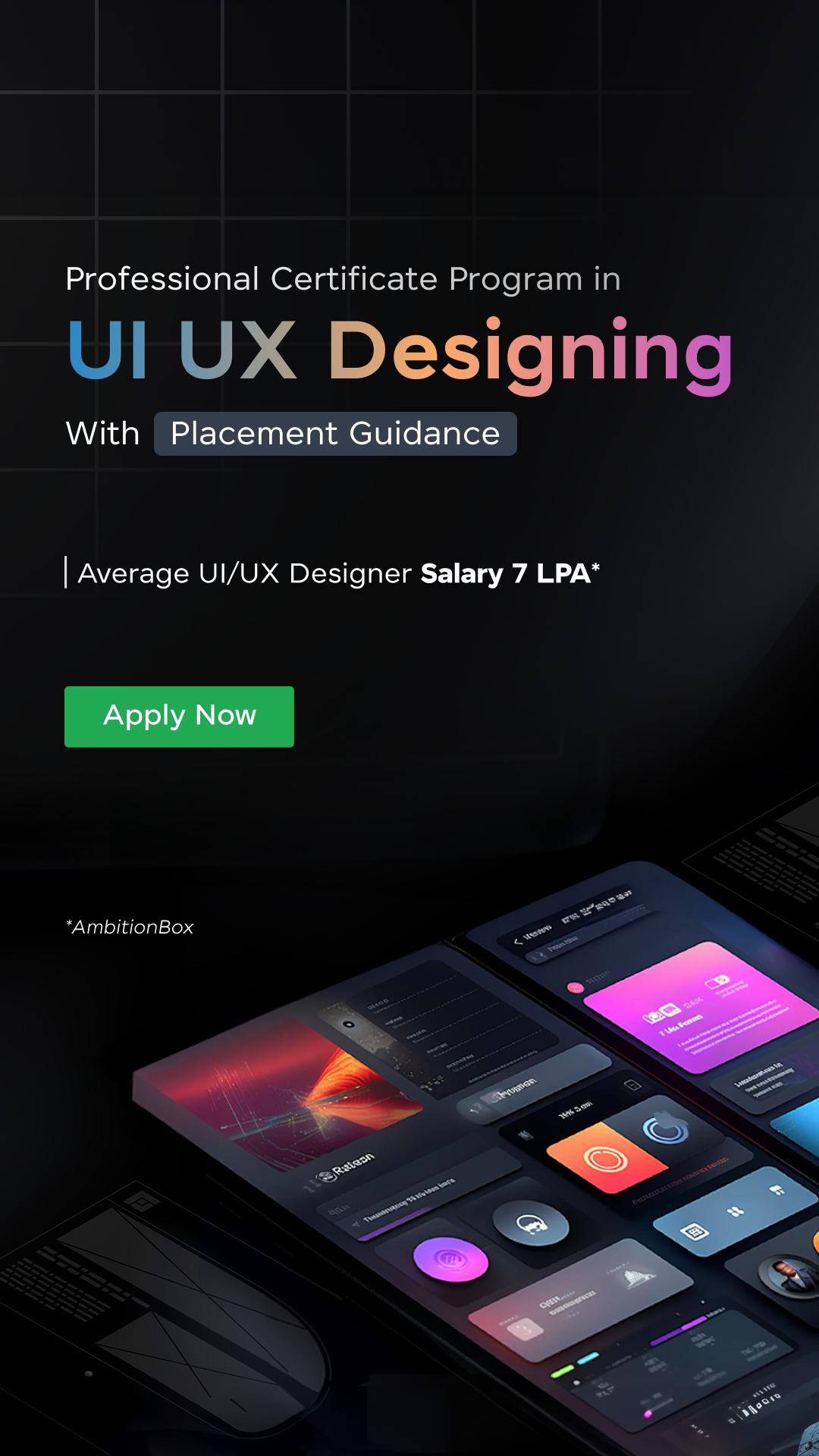







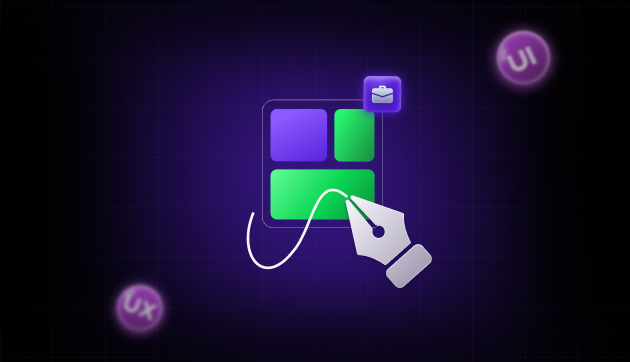


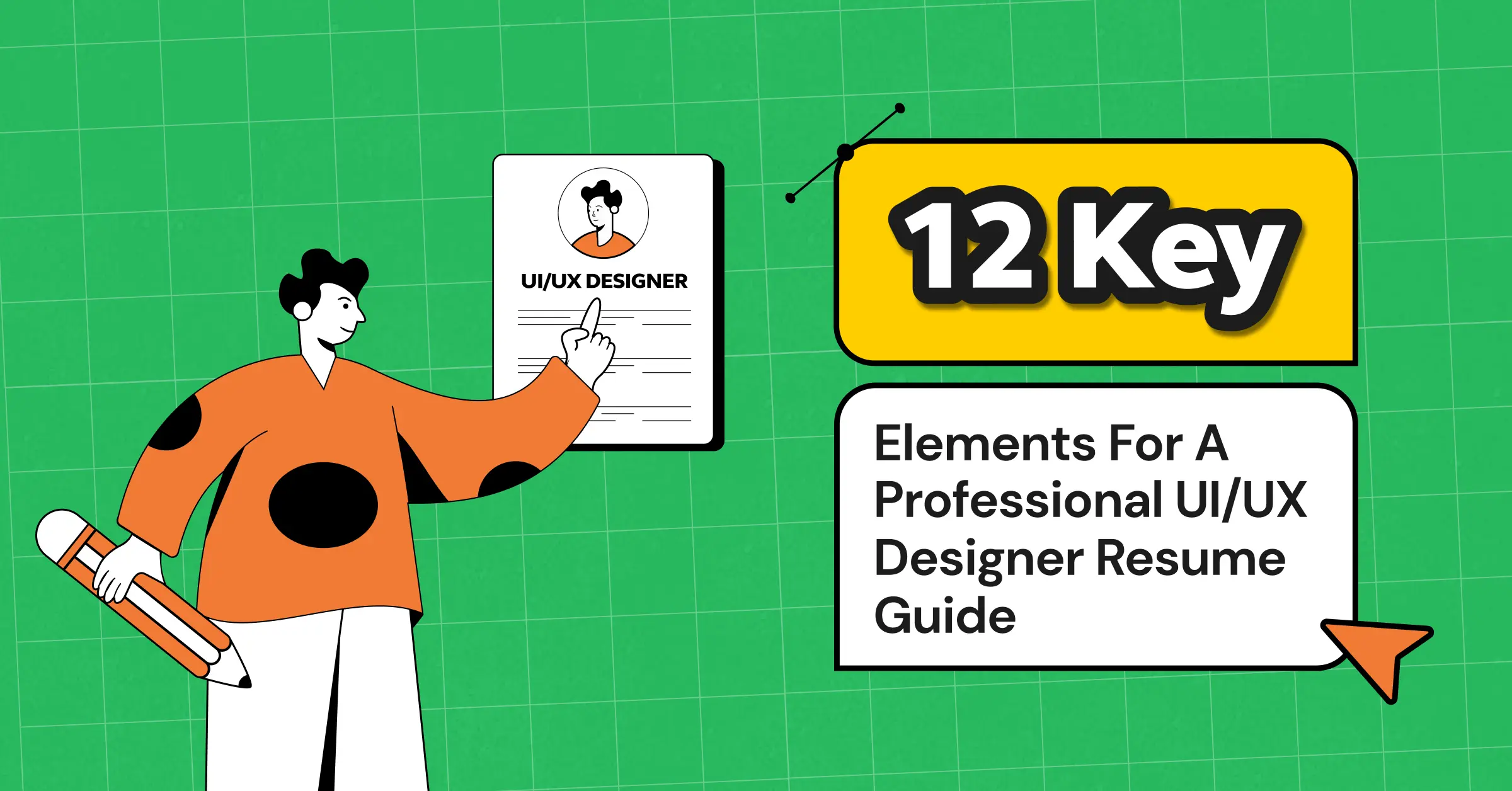
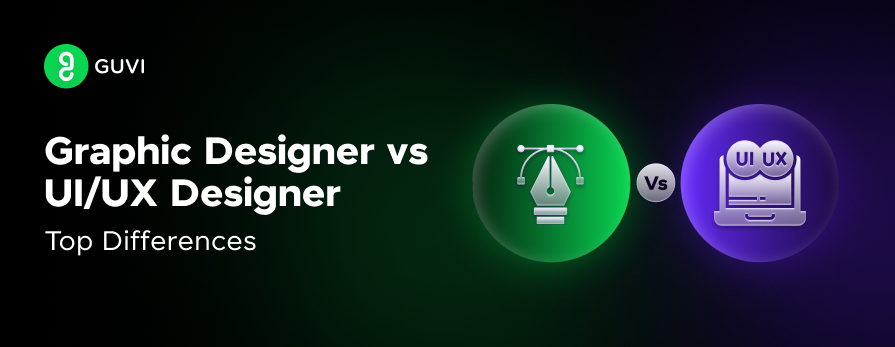
![Wireframe vs. Mockup vs. Prototype: Top Differences [2024] 10 wireframe vs. mockup vs. prototype](https://www.guvi.in/blog/wp-content/uploads/2023/12/Wireframe-vs.-Mockup-vs.-Prototype_-Top-Differences-feature-image.png)

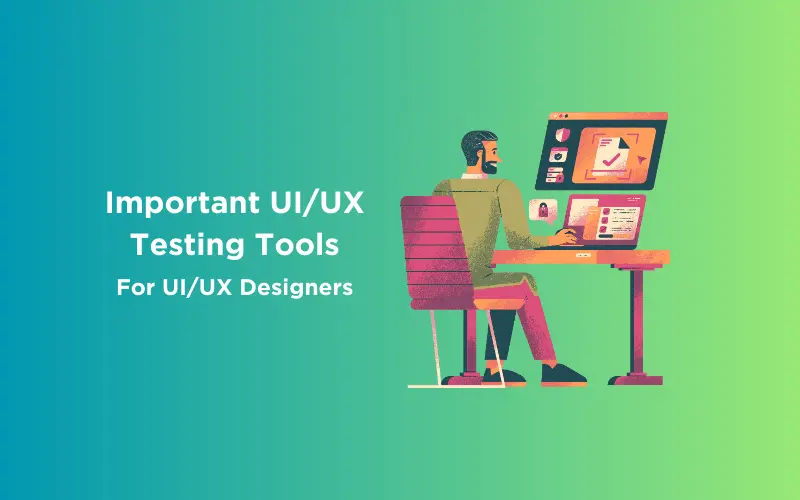

Did you enjoy this article?